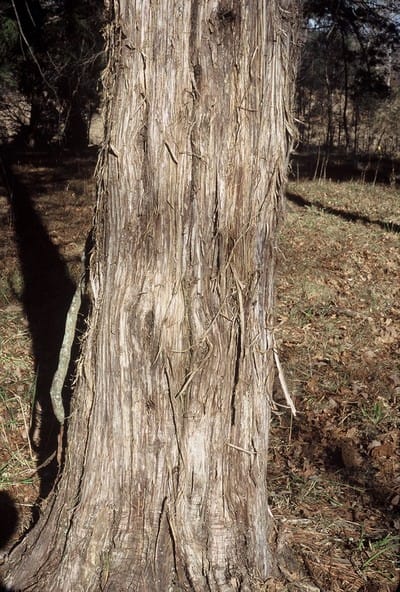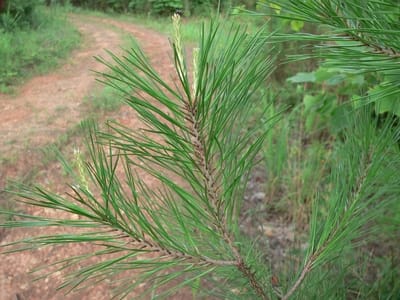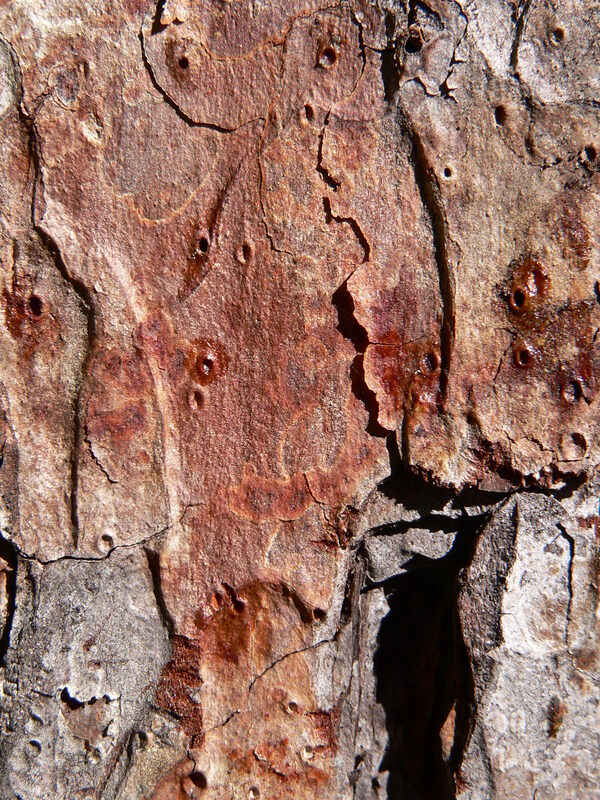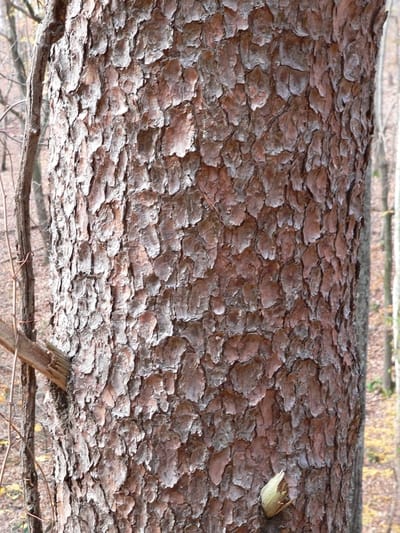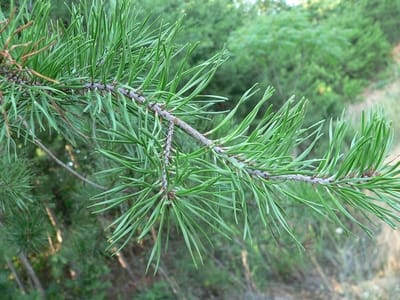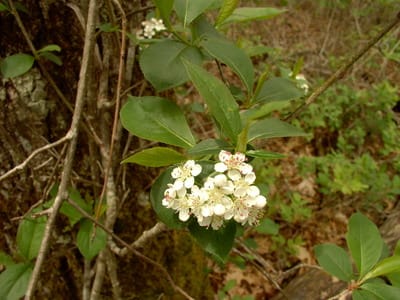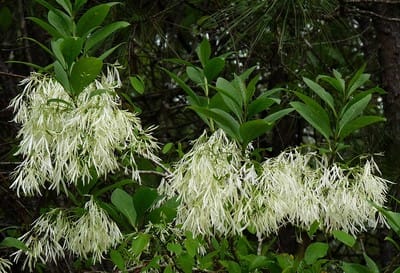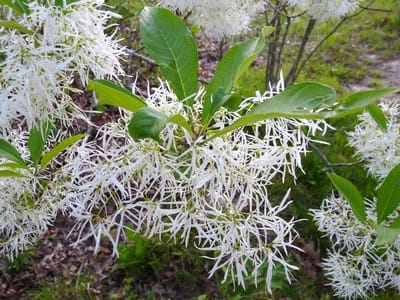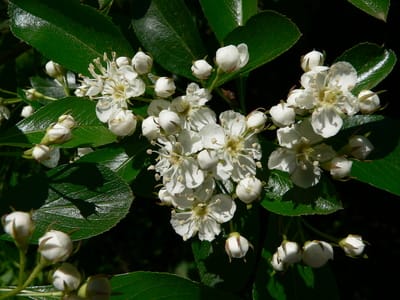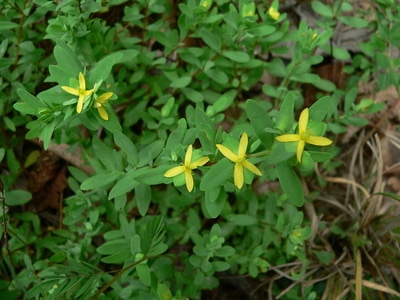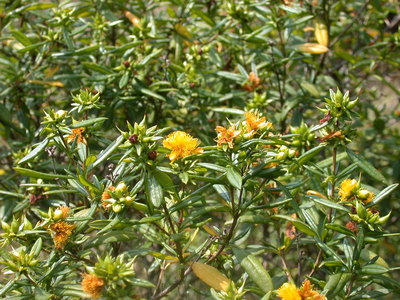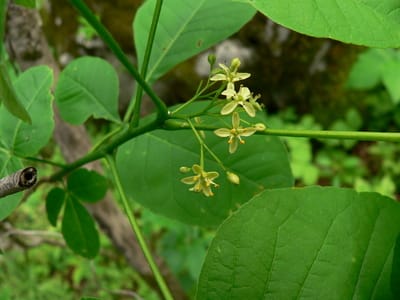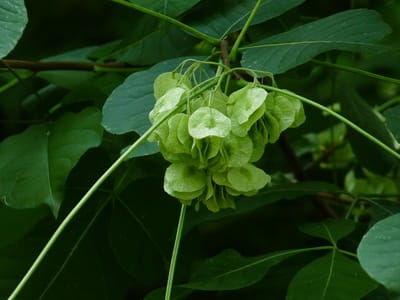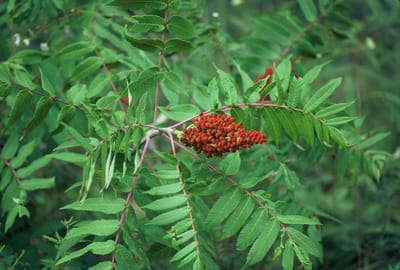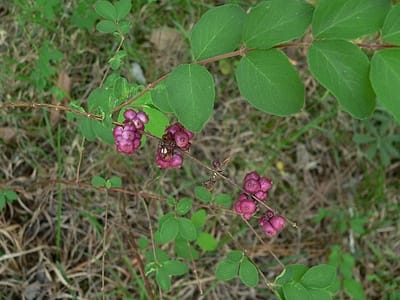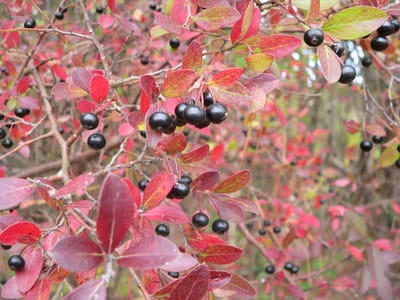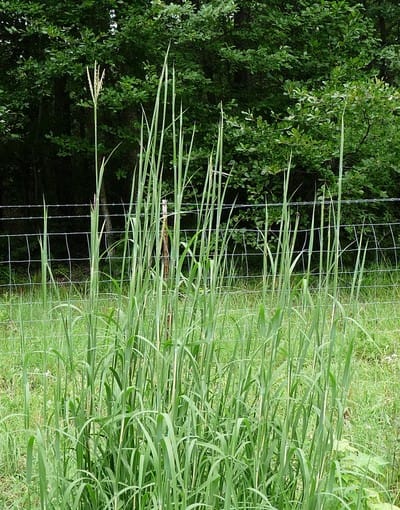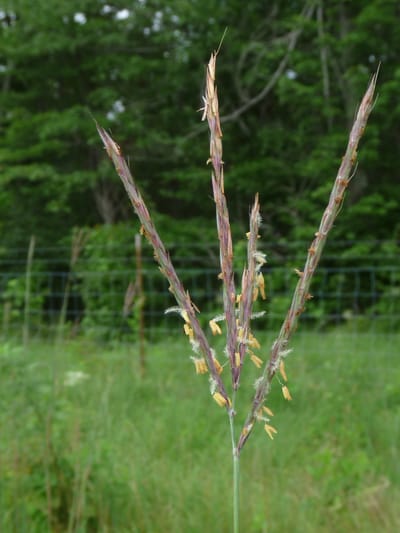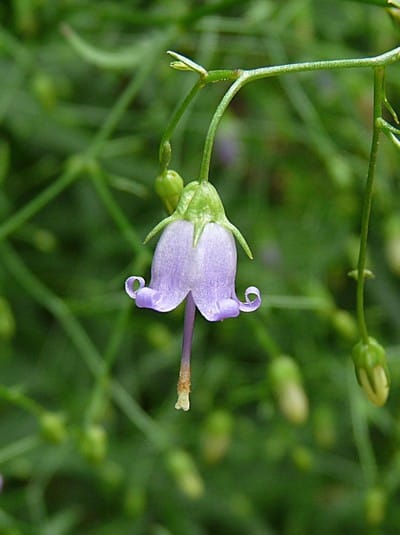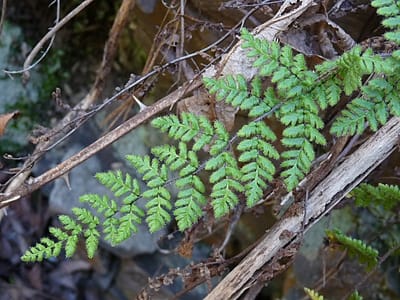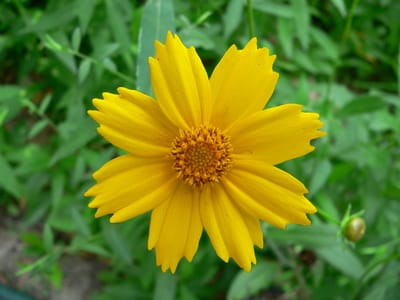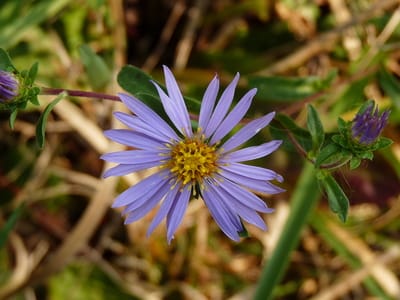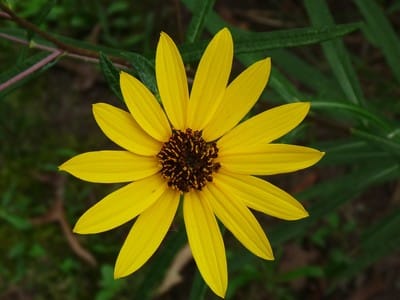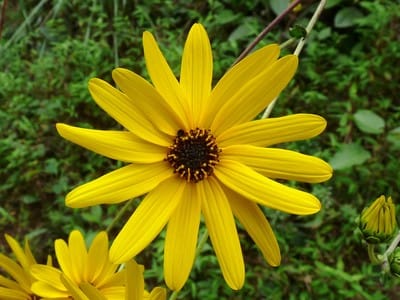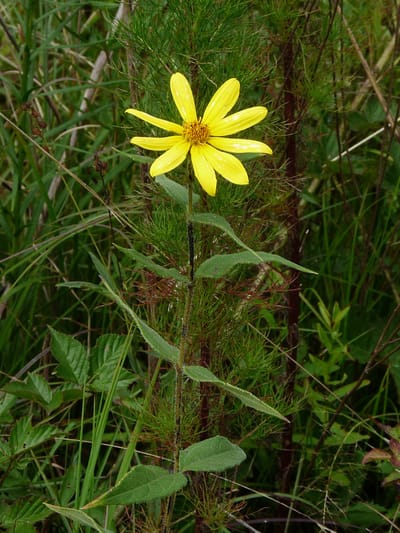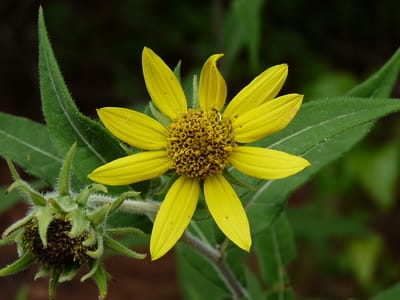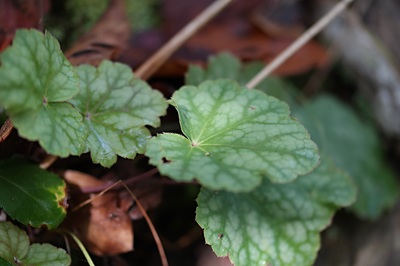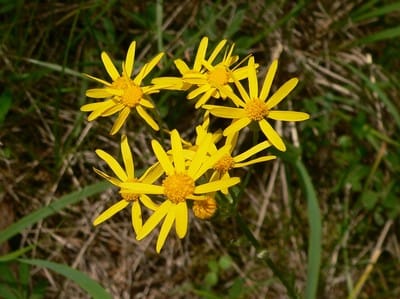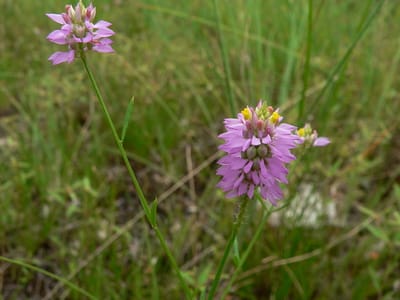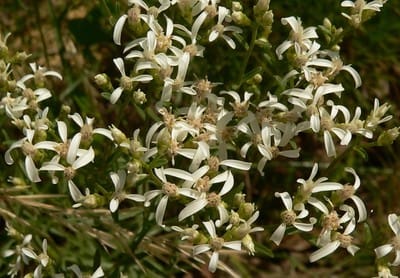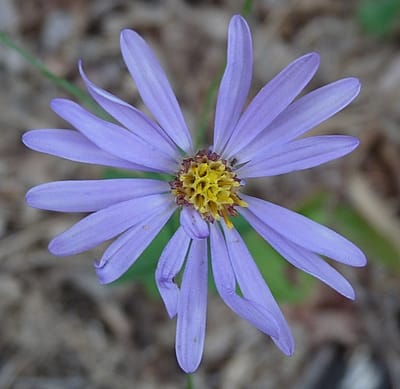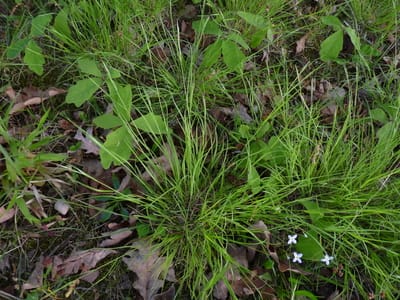Mafic Dome Rock Outcrops
|
Mafic Domes are rock outcrops below 4,000 feet, on or or perhaps near mafic (high in magnesium, iron,and often calcium) rocks, such as amphibolite or hornblende gneiss. There is usually in a mosaic of glades, barrens, and woodlands scattered over an expanse of rock. These outcrops will host many species not found on more acidic rock, and can harbor rare plants.
Indicator species: An abundance of eastern red cedar, white ash, wafer-ash, and/or hickories is a good indication of mafic conditions. |
|
What's special: The rock outcrops provide openings that offer great views of receding mountain ridges. The additional nutrients in the bedrock, combined with the harsh conditions of the exposed rock enable interesting plant communities to develop.
Related communities: At close to 4,000 feet, this natural community grades into and overlaps High Elevation Outcrops. As nutrients decline, this community grades into Low to Mid Elevation Acidic Cliffs and Outcrops, and Pine-Oak Woodlands.
Learn MORE HERE about plant adaptations to rocky places.
Learn MORE HERE about rock types and their affect on plants.
|
Plants
Click on the highlighted plant names below for images. Trees Pignut hickory Carya glabra White ash Fraxinus americana Eastern red cedar Juniperus virginana Shortleaf pine Pinus echinata Virginia pine Pinus virginiana Rock chestnut oak Quercus montana Shrubs Black chokeberry Aronia melanocarpa Fringe-tree Chionanthus virginicus Smooth hydrangea Hydrangea arborescens Shrubby St.-John's-wort Hypericum prolificum St. Andrew's cross Hypericum stragulum Wafer ash Ptelea trifoliata Smooth sumac Rhus glabra Coralberry Symphoricarpos orbiculatus Sparkleberry Vaccinium arboreum Deerberry Vaccinium stamineum Ground Layer Wildflowers Harebell Campanula divaricata Hairy coreopsis Coreopsis pubescens Creeping aster Eurybia surculosa Narrowleaf sunflower Helianthus angustifolius Appalachian sunflower Helianthus atrorubens Hairy sunflower Helianthus hirsutus Roughleaf sunflower Helianthus strumosus Rock alumroot Heuchera villosa Cliff saxifrage Hydatica petiolaris Pineweed Hypericum gentianoides Mountain dwarf-dandelion Krigia montana Appalachian ragwort Packera anonyma Appalachian rock-pink Phemeranthus teretifolius Appalachian milkwort Polygala curtissii Glade knotweed Polygonum tenue Narrow-leaf white-topped aster Sericocarpus linifolius Licorice goldenrod Solidago odora Common clasping aster Symphyotrichum patens Grasses Big bluestem Andropogon gerardii Common hairsedge Bulbostylis capillaris Common bottlebrush grass Elymus hystrix Poverty oat-grass Danthonia spicata Little bluestem Schizachyrium scoparium Yellow Indiangrass Sorghastrum nutans Ferns and Fern Allies Hairy lipfern Cheilanthes lanosa Marginal woodfern Dryopteris marginalis Rock spikemoss Selaginella rupestris Blunt-lobed cliff fern Woodsia obtusa |
Representative Trees in order by scientific name
Representative Shrubs in order by scientific name
Representative Ground Layer plants in order by scientific name |

